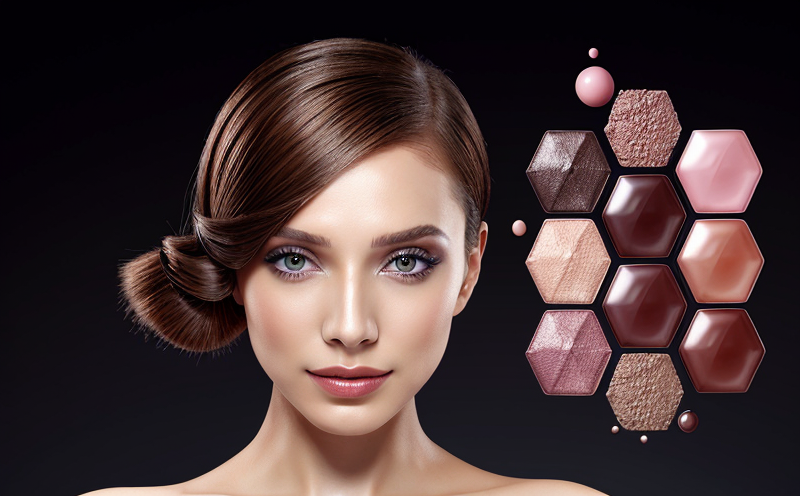Safety Testing of Nanoparticles in Cosmetic Formulations
Nanotechnology has revolutionized the cosmetics industry by introducing innovative ingredients such as nanoparticles. These nanomaterials, including titanium dioxide (TiO₂) and zinc oxide (ZnO), offer unique properties like improved skin barrier function, enhanced sun protection, and controlled drug delivery systems. However, their potential risks necessitate thorough safety testing to ensure they do not pose health or environmental hazards.
Safety testing of nanoparticles in cosmetic formulations is crucial for regulatory compliance and consumer confidence. Regulatory bodies around the world, such as the FDA, EU Cosmetics Regulation, and the European Commission's Scientific Committee on Consumer Safety (SCCS), have established guidelines and standards to address these concerns. These guidelines focus on identifying potential adverse effects, assessing particle size distribution, evaluating cellular toxicity, and determining environmental impact.
The testing process involves several key steps that ensure comprehensive evaluation of nanoparticle safety:
- Particle Characterization: This includes scanning electron microscopy (SEM), transmission electron microscopy (TEM), dynamic light scattering (DLS), and zeta potential measurement to determine particle size, shape, and stability.
- In Vitro Toxicity Testing: Cytotoxicity tests using cell lines such as HepG2 or MCF-7 assess the direct effects of nanoparticles on human cells. These tests are critical for understanding how particles interact with biological systems.
- Animal-Free Assays: Alternative testing methods like the use of zebrafish embryos, Drosophila melanogaster (fruit fly), and various in vitro models help minimize animal testing while providing valuable data on nanoparticle behavior.
- Environmental Impact Assessment: This involves evaluating the potential release of nanoparticles into the environment and assessing their biodegradability, bioaccumulation, and persistence. The OECD guidelines for ecotoxicity testing provide a framework for these assessments.
Accurate and reliable safety testing is essential to ensure that cosmetic formulations containing nanoparticles are safe for both consumers and the environment. Our laboratory adheres to international standards such as ISO 17885:2019, which specifies requirements for cosmetics intended for children under three years old, ensuring compliance with stringent safety protocols.
Our team of experts employs advanced analytical techniques and state-of-the-art instrumentation to provide comprehensive testing services. From initial particle characterization to final toxicity assessments, we ensure that every aspect of nanoparticle safety is thoroughly evaluated. Our clients include quality managers, compliance officers, R&D engineers, and procurement specialists who rely on our expertise to navigate the complexities of nanotechnology in cosmetics.
Benefits
The benefits of safety testing nanoparticles in cosmetic formulations are multifaceted. By ensuring the safety of these ingredients, we help clients:
- Avoid legal penalties and fines by meeting strict regulatory requirements.
- Gain consumer trust through transparent and responsible manufacturing practices.
- Enhance product efficacy while maintaining high standards of quality and safety.
- Increase market competitiveness by staying ahead of industry trends and regulations.
Safety testing also supports the development of innovative formulations that meet consumer demands for safer, more effective products. By addressing potential risks early in the product lifecycle, our clients can reduce costly recalls and improve overall brand reputation.
Industry Applications
The application of nanoparticles in cosmetics is vast and varied, with numerous benefits for both manufacturers and consumers. Some key applications include:
- Sun Protection: Nanoparticles like titanium dioxide and zinc oxide are widely used in sunscreens to provide broad-spectrum UV protection.
- Antimicrobial Properties: Silver nanoparticles can be incorporated into cosmetics for their antibacterial properties, enhancing product efficacy.
- Skin Care: Nanoparticles improve the delivery of active ingredients deep into the skin layers, leading to more effective skincare solutions.
- Drug Delivery: Encapsulating drugs within nanoparticles can enhance targeted drug delivery and improve therapeutic outcomes.
These applications highlight the importance of safety testing in ensuring that these innovative ingredients are both safe and effective. Our laboratory plays a crucial role in supporting the industry by providing comprehensive testing services, helping manufacturers navigate regulatory challenges while advancing product development.
International Acceptance and Recognition
- FDA: The U.S. Food and Drug Administration requires manufacturers to demonstrate the safety of nanomaterials used in cosmetics, particularly for products intended for children.
- EU Cosmetics Regulation: The EU regulation on cosmetic products (EC) No 1223/2009 mandates that all cosmetic products undergo rigorous testing and comply with strict safety standards.
- OECD Guidelines: The Organisation for Economic Co-operation and Development provides a framework for assessing the environmental impact of nanomaterials, ensuring compliance with international standards.
The acceptance and recognition of our testing services extend across multiple countries and regions. By adhering to these guidelines and standards, we ensure that our clients are prepared for global markets, reducing the risk of non-compliance issues.





